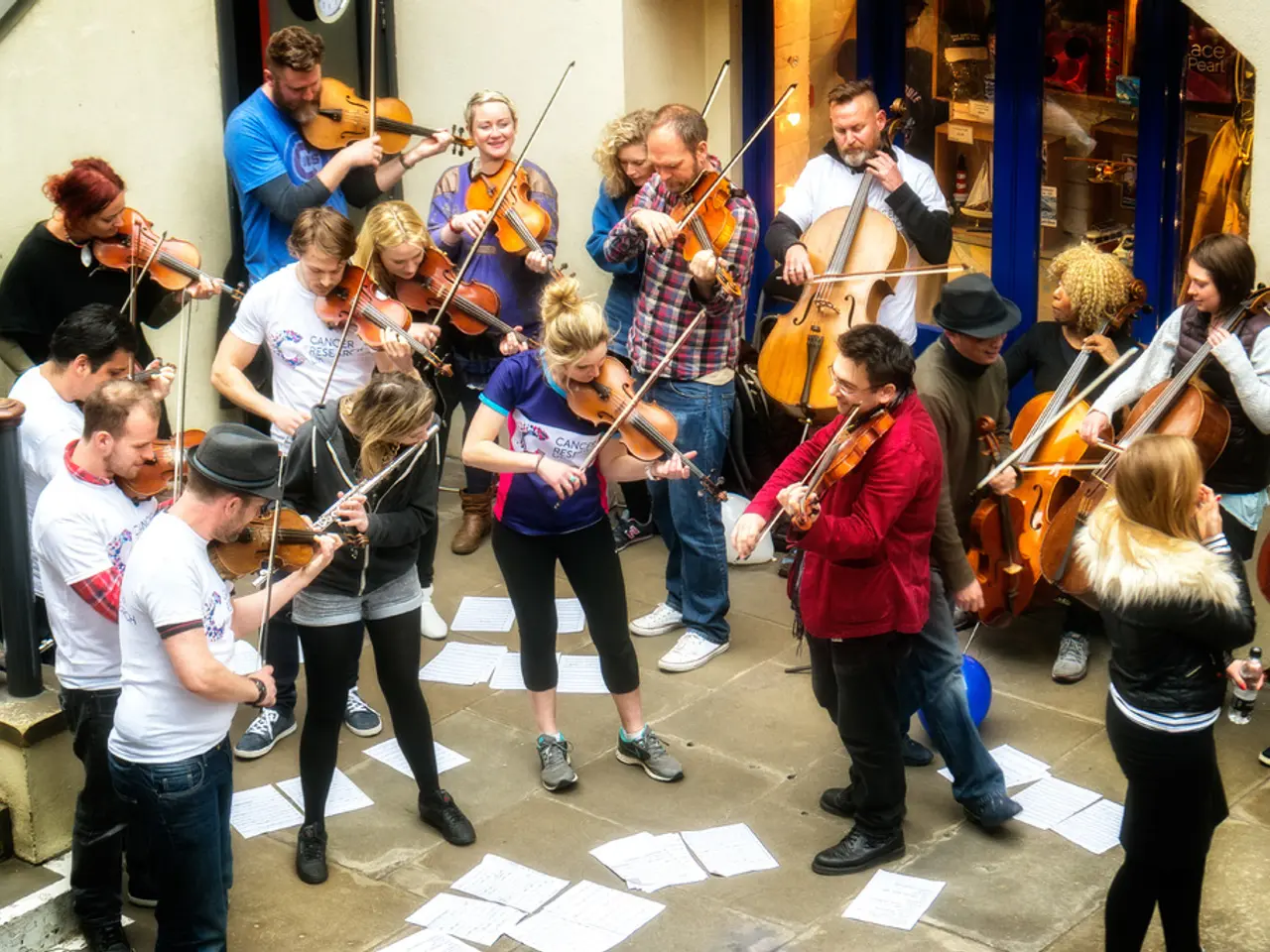Achieving an Instrument Rating: A Guide and Its Advantages
In the world of aviation, obtaining an instrument rating is a significant milestone for pilots. This rating allows for increased flexibility to fly in various weather conditions, a crucial skill for professional aviators. When it comes to the costs and time requirements between Part 61 and Part 141 training, there are some key differences to consider.
### Time Requirements
Part 141 training, which operates under FAA-approved, structured flight schools with formal syllabi, allows eligible students to complete certifications, such as a commercial pilot certificate, with fewer total flight hours. For instance, a Part 141 commercial pilot certificate can be completed with as few as 190 total flight hours. In contrast, Part 61 training, which is more flexible and student-paced, requires a higher minimum number of flight hours, typically around 250 total flight hours for the same commercial pilot certificate requirements.
For the instrument rating specifically, while exact numbers vary, the structured nature of Part 141 schools tends to allow students to complete the training in less time due to the FAA-approved syllabus and more rigorous scheduling.
### Cost Comparison
Although Part 141 training may appear more expensive upfront because of potentially higher hourly rates at certified schools, it often costs less overall because students require fewer flight hours to meet FAA certification standards. Part 61 training has lower hourly costs on paper but usually requires more hours to complete the training, increasing the total cost.
For example, FLT Academy reported average aircraft rental costs at $175/hour and instructor time at $65/hour, estimating cost savings with Part 141 due to fewer hours despite higher rates.
### Other Considerations
Part 141 programs are more regulated, subject to FAA audits, and provide a structured environment, which suits students aiming for career-oriented, accelerated training. Part 61 offers more flexibility, ideal for students who prefer to progress at their own pace or balance training with other responsibilities but may face longer completion times.
Graduates from Part 141 programs who meet certain criteria may become eligible for a Restricted ATP certificate at 1,000 hours instead of 1,500, potentially accelerating airline career entry.
### Summary Table
| Aspect | Part 61 | Part 141 | |-----------------------|------------------------------------|-------------------------------------| | Flight Hours Required | Higher (e.g., 250+ hours for commercial rating) | Lower (e.g., as few as 190 hours) | | Training Structure | Flexible, student-paced | FAA-approved, structured syllabus | | Cost per Hour | Typically lower hourly rates | Typically higher hourly rates | | Total Cost | Usually higher overall due to more hours | Usually lower overall due to fewer hours | | Time to Completion | Longer | Shorter, accelerated | | Career Benefits | Less structured progression | Potential for Restricted ATP at 1,000 hours |
In conclusion, Part 141 training generally requires fewer flight hours and less total time, which can reduce overall costs despite higher hourly rates, while Part 61 offers more flexibility but often results in longer and potentially more expensive training to obtain an instrument rating. Your choice depends on your budget, schedule flexibility, and career goals.
It's important to note that both training methods require a private pilot certificate as a prerequisite, a logbook endorsement certifying readiness for the FAA knowledge test, English language proficiency, ground school training or training from an authorized instructor, and both a knowledge (written) test and a practical (flight) test to complete the instrument rating.
Moreover, the training covers crucial aspects such as aeronautical decision making and judgment, IFR navigation and approaches, crew resource management, and safe and efficient operation of aircraft under instrument flight rules. Aviation weather reports and forecasts, windshear avoidance, and recognition of critical weather situations are also integral parts of IFR flight operations.
References: [1] FLT Academy. (n.d.). Instrument Rating Training Costs. Retrieved from https://www.fltacademy.com/instrument-rating-training-costs/ [3] Aviation Schools Online. (n.d.). Part 141 vs Part 61 Flight Schools. Retrieved from https://www.aviation-schools-online.com/part-141-vs-part-61-flight-schools.html
- In aviation, an instrument rating is a vital achievement for pilots, enhancing their ability to fly in diverse weather conditions.
- This rating is essential for professional pilots, offering increased flexibility in different weather scenarios.
- In comparison to Part 61 training, Part 141 training, operated within FAA-approved flight schools, offers a structured syllabus, accelerating certification processes.
- For instance, a commercial pilot certificate under Part 141 can be completed with as little as 190 total flight hours.
- In contrast, Part 61 training, known for its flexibility, mandates a higher minimum number of flight hours, around 250 for the same commercial pilot certificate requirements.
- For the instrument rating, the structured nature of Part 141 schools tends to reduce training time due to the FAA-approved syllabus and rigorous scheduling.
- Although Part 141 training may seem more expensive due to potentially higher hourly rates, it can result in lower overall costs thanks to the reduced number of flight hours required.
- For example, FLT Academy reports average aircraft rental costs at $175/hour and instructor time at $65/hour, estimating cost savings from Part 141 training due to fewer hours, despite higher rates.
- Part 141 programs are more regulated and subject to FAA audits, offering a structured environment suitable for career-oriented, accelerated training.
- Part 61 training provides more flexibility, ideal for students balancing training with other responsibilities, but it often leads to longer completion times.
- Graduates from Part 141 programs meeting certain criteria can become eligible for a Restricted ATP certificate at 1,000 hours, potentially expediting airline career entry.
- To obtain an instrument rating, both methods require a private pilot certificate, logbook endorsement, English language proficiency, ground school training, a knowledge (written) test, and a practical (flight) test.
- The training covers essential aspects such as aeronautical decision making, IFR navigation and approaches, crew resource management, and effective aircraft operation under instrument flight rules.
- Aviation weather reports and forecasts, windshear avoidance, and recognizing critical weather situations are integral parts of IFR flight operations.
- Both training methods also prioritize safety and efficient flying, contributing to the discipline and skills necessary for successful careers in the aviation industry, finance, and transportation.




